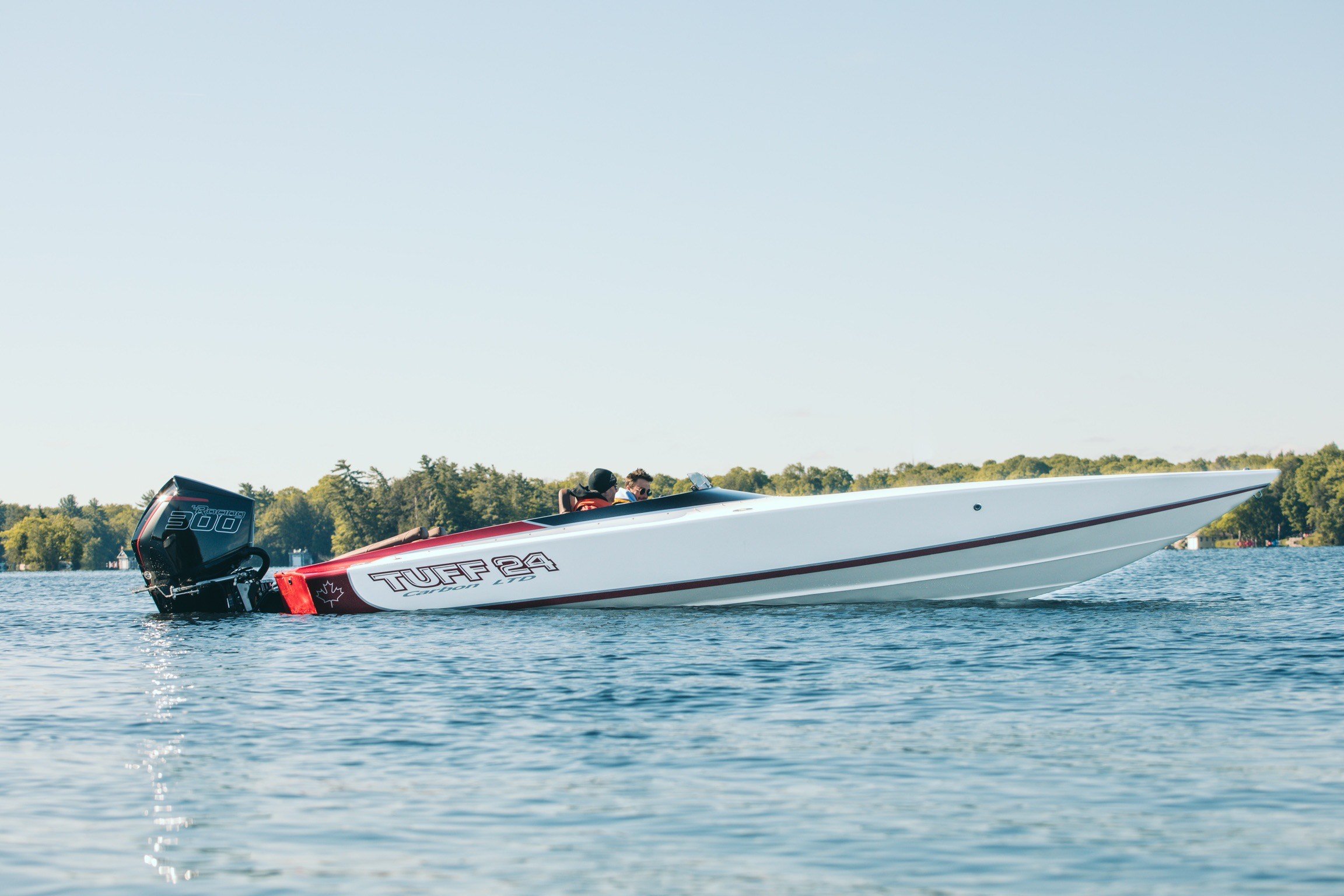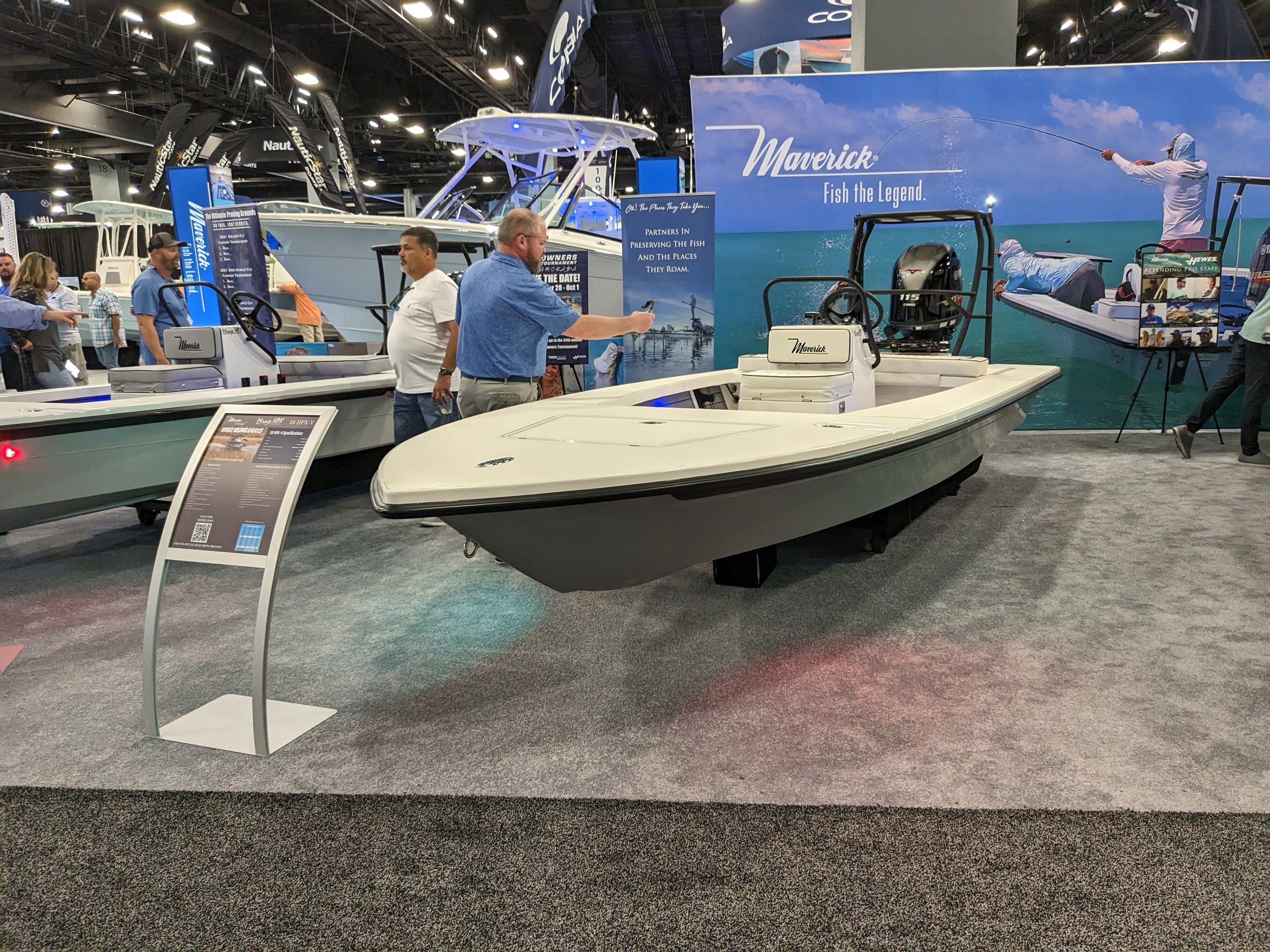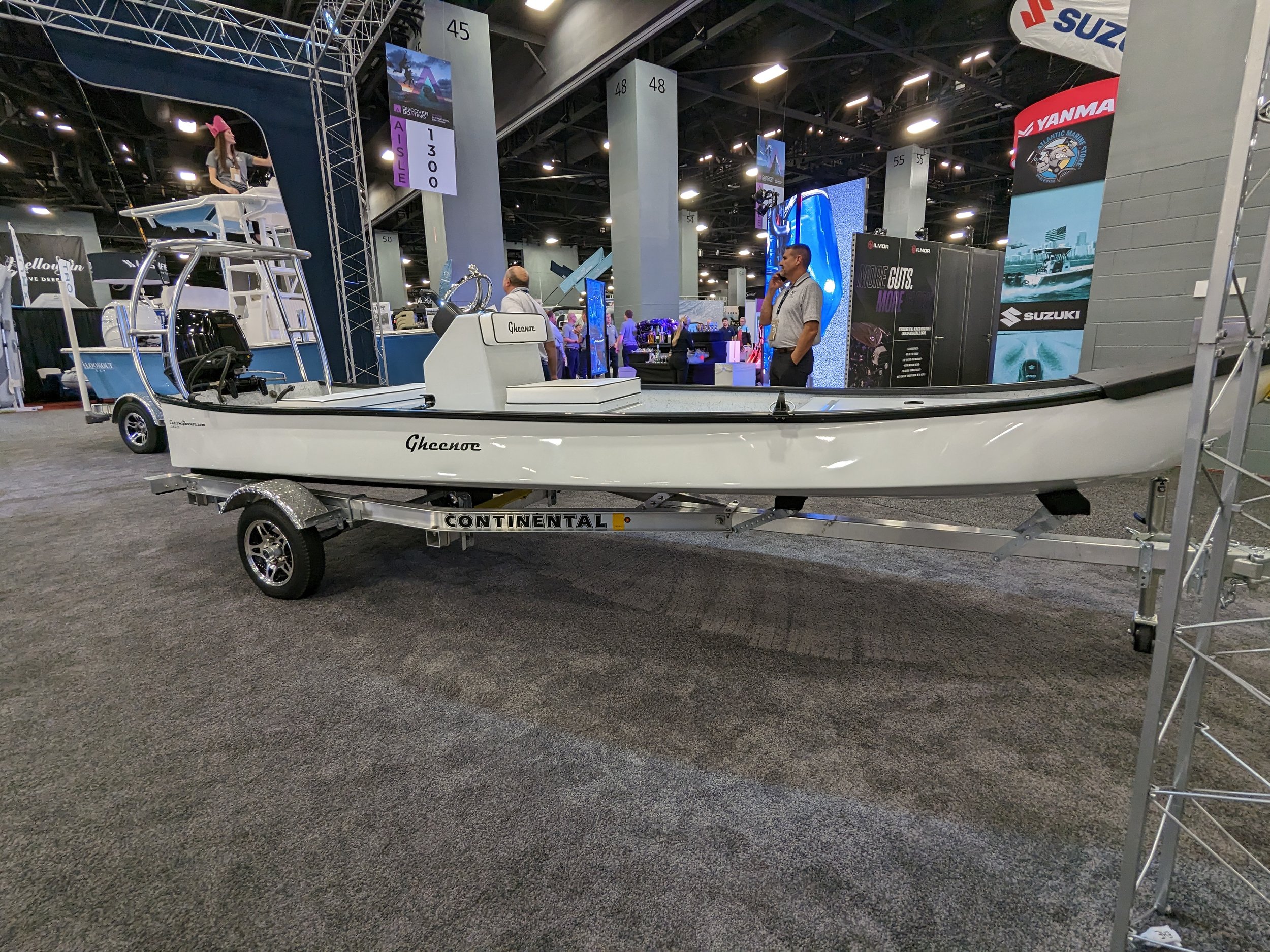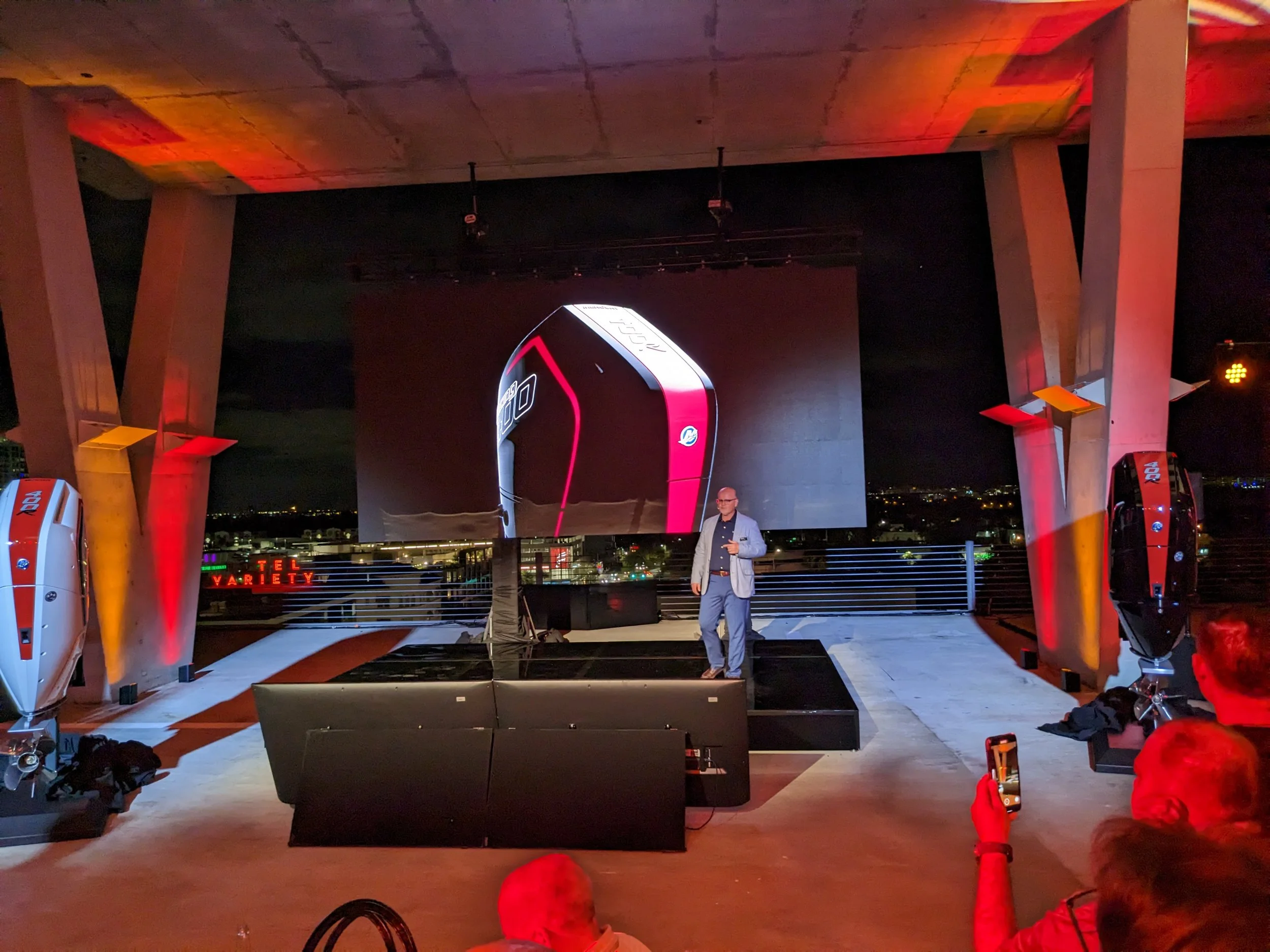Performance Boat Revolution: What Happened to the Affordable Performance Boat?
What happened to the affordable family performance boat? When I was growing up, not only was there a great number of manufacturers making 15’ to 22’ family performance boats but even mainstream manufacturers made performance oriented boats. Big manufacturers like Chaparral, Sea Ray, Baja, Glastron, Chris Craft and others, made boats with good design. Even Chrysler made boats in the 70s with some cool designs. Smaller manufacturers were plentiful in making really cool boats; Sidewinder, Hydrostream, Allison, Checkmate, Avenger, Eliminator, Howard; you could go on and on. All made small boats that were attainable to the average guy. What happened?
First, the market definitely has changed but there is still an appetite for good design. And you can’t tell me nobody can make an affordable 16 to 22’ footer because many fishing boat builders do, so it’s absolutely possible. Tuff Marine in Ontario Canada makes the coolest 16’ on the market and a stunning new 20’ but they’re pretty much the only small performance sport boat being built right now. With consumers buying PWCs in record numbers, and buying Yamaha jetboats in high volume, you have to wonder if the consumer was presented with a compelling choice, would they buy? The small jetboats are absolutely brutal when it comes to performance and design.
There were plenty of great boats in the early days. Bob and Dave Switzer made some incredible designs and were accessible performance boats. I believe this is a Switzer GL-21.
I do see plenty of boaters restoring some old boats, partly for a project but also because you really can’t buy anything new that can run a 90 to 150 HP and be a great family performance boat. There is no question in my mind that there is a market for that; a simple boat that can run fast, pull a skier and be towed behind anything or stored anywhere. Another big benefit of small outboards is the efficiency, a well designed 18’ hull with a 115 or 150 can fly but also sip fuel, being twice as economical to run compared to a jet bathtub or PWC.
You might consider restoring an old boat like this Sutphen Sport Pacer 173 because there is nothing like it you can buy new. Perfect for the 115 to 150 HP market.
My Dad used to race a small boat called a Dorsett in the sixties, and he ran a Mercury 650 4 cylinder, which was a big engine at the time. The little 13’ hull was a race boat and a runabout. That was a time leading up to what I would call a hey day in performance boats. The 60s saw the major transition to fiberglass, and more entrepreneurs entering the business. Looking back, it’s incredible how prolific the industry was and how many manufacturers came out of that era. If the 60s were the hey day, the 70s might be a golden age, and the 80s a renaissance (I actually don’t know what that means but it sounds good).
We had some of the most important revolutions in the marine industry happening over that time. Outboards were still trying to become mainstream, and were delegated to mostly small performance hulls up until about the late 70s, when 175 and 200+ HP became available, but even then, big block power was the way to for anything bigger. Jet boats, V drives, and small outboards took over lakes all over the country. And narrow beam offshore boats were getting popular, especially in South Florida and the East Coast. Some of our favorite boats were probably born out of that era; 60s, 70s or 80s, depending how old you are.
Even when bigger offshore boats were getting popular, the major manufacturers made smaller boats like this 1976 Cigarette 20. The economics isn’t there for some of these companies.
One thing changed in the 90s that affected the marine market, and it’s a fundamental part of business and manufacturing. The bigger the market got, the more scale was needed to keep costs competitive. You had to go big to be affordable. Donzi, Cigarette, Fountain, Baja and others became large companies and became more corporate, where investors and shareholders wanted sales over innovation. What happens then is similar to many other industries, you still have small independent builders but the costs go way up. It became much harder for a small shop to open and build boats on order, as many custom shops did, as opposed to lining up a dealer network and building to scale. Two very different business models, diametrically opposed. This meant an impending attrition of the small shops as the market shrank with price increases, the ones with the best boats and or marketing survive, others don’t. The 2000s was a challenging time for smaller builders, and 2008 was a crippling blow to many. Even the ones that survived were chugging along after.
I took this picture in the mid 2000s at a Donzi, Fountain and Chris Craft dealer before the crash of 2008. Lots of small boats on the lot.
To mark the end of the era that we might call “mass manufactured performance boats” might have been when Fountain Powerboats initially went bankrupt in 2009. Fountain wasn’t alone, many manufacturers felt the squeeze of the financial crisis. Big brands like Fountain can always find a suitor though, and American Marine Holdings eventually owned Fountain, Baja, Donzi and Pro-Line boats, but filed chapter 11 again in 2012. After various lawsuits and financial difficulty, those brands are now owned by Iconic Marine Group, with varying degrees of success, but they primarily make center console boats under the Fountain brand, and some Donzi models like the 22 Classic and the 38 ZRC. Baja is pretty much dead.
In fairness, that’s just one of many similar stories. The manufacturers making hardcore performance boats went big. Skater, MTI, Mystic, Cigarette, DCB, Outerlimits and various others went to big high dollar boats. It’s no secret, that’s where the margin is, it doesn’t cost that much more to make a 38’ over a 28’, and consequently a 50’ over a 40’; so go big and make money. And, the luxury center console market really saved some of those brands, who make their rent selling those. Similarly to builders of small performance boats like Allison boats, the bass boat market allowed them to monetize to continue building sport boats and race boats up until recently. Checkmate Powerboats was one of the longest running independent performance boat manufacturers, but they went out of business in a bizarre scenario after being acquired by Caldwell Marine Designs.
Some Checkmates at a dealer a long time ago. Checkmate was a staple in the performance market for decades, with different models in small and mid size; 16’ to 30’.
Like previously mentioned, Tuff Marine, a boutique builder in Canada makes cutting edge designs in a very specific market and they are among the few doing it. Their waitlist is very long because they make some of the most compelling boats today. You could say Velocity, Rage Powerboats, Progression and maybe a few others are doing it. For Progression and Velocity, I would say the hull designs are great but the lines are a little dated. Allison Boats does not make sport boats anymore due to the fact that there no appropriate engines for their hulls. I import Chaudron Powerboats from Malta to address the lack of small sport boats here in America. Chaudron is a small family business that has built race and pleasure boats to a very high standard for over 35 years. They make a 22’, 25 and 27’ single engine outboard models that are rough water oriented performance boats, along with a 33’, 42’ and 45’
For boats 22’ and under that perform and have good design, the options are really limited. The Chaudron Pro S-22 is a rough water capable fast hull built to a really high standard.
There are basically a few ways to build boats these days to create a viable business. One is a boutique builder, fully custom like Tuff or Progression, offering a few models built to a high standard and exceptional performance. These are truly owner operator shops, you’re doing everything: selling, sanding, cleaning and rigging. A labor of love but can be very rewarding. The next level is offering more models in larger size ranges; 20 to 40 boats a year. This is a tough operation with a small number of employees and can work well but there is no doubt it’s a grind and a passion based business. Some higher end builders can make this more lucrative by selling boats in the $500,000 to $1 million + range. When you get to 50 or more boats a year, the game changes. You are becoming a bigger manufacturer where you need more employees, more models, a dealer network potentially or a strong inhouse sales team at least. Many custom builders reach that 20 to 30 boat mark and struggle with the next step to scale.
The Tuff 24 is a stunning boat and incredibly fast. The company has already redesigned it to a 25’ model. Constantly innovating, Tuff are probably the most exciting sport boat company right now and are a boutique builder in Canada. 16’, 25, 28, and 34’.
To me what is encouraging is when I look at the specialty fishing market. There are so many great companies building really cool and specialized boats in all sizes and budgets. The fishing market is strong because it’s a great reason to buy a boat for one and can often fill family duty as well. But I love the creativity and entrepreneurship in the fishing segment. You have everything from micro skiffs at $25k, performance bass boats that can do over a 100 MPH, to multi million dollar offshore fishing machines. Truly a crazy market but encouraging to performance enthusiasts. If you can make little skiffs or flats boats as a boutique builder, you definitely can make a small performance boat at a reasonable price. I personally feel the 115 HP to 200 HP is an under appreciated market.
The performance flats boat market is very competitive with dozens of manufacturers and some cool boats. Prices range from accessible to holy shit. Small boats can be built affordably though.
What might be missing from the small boat segment now is not so much a lack of market but maybe a lack of vision. Designers like Darris Allison, Dave and Bob Switzer, Howard Pipkorn, Art Carlson, Al Stoker, and Roark Summerford (to name a few); became entrepreneurs because they saw a market, a new way to do things. Right now the boat world is missing the innovation those guys demonstrated. Tuff Marine is doing it, they keep innovating and pushing the limit with new models. We need more of that in the industry. I see mainstream boat manufacturers trying to bolt electric motors on the back of poorly designed chunks of fiberglass and that ain’t it.
Sometimes if you’re a designer you have to look at what power you are designing for. The 115 to 200 HP market has affordable engines that are great, but there are very limited options for sport boats in this range. I love running smaller engines on small boats, they are incredibly efficient and fun.
This Custom Gheenoe LO Tide 25 is a 16’ shallow water fishing machine. Very customizable and can run a 25 HP, it’s an affordable package that looks really fun. Small boats are just more fun.
Although it looks like a bathtub, you can mass manufacture small boats.
A Charger 18 DL, a Canadian made performance boat from the 80s. That’s a cool looking boat.


















